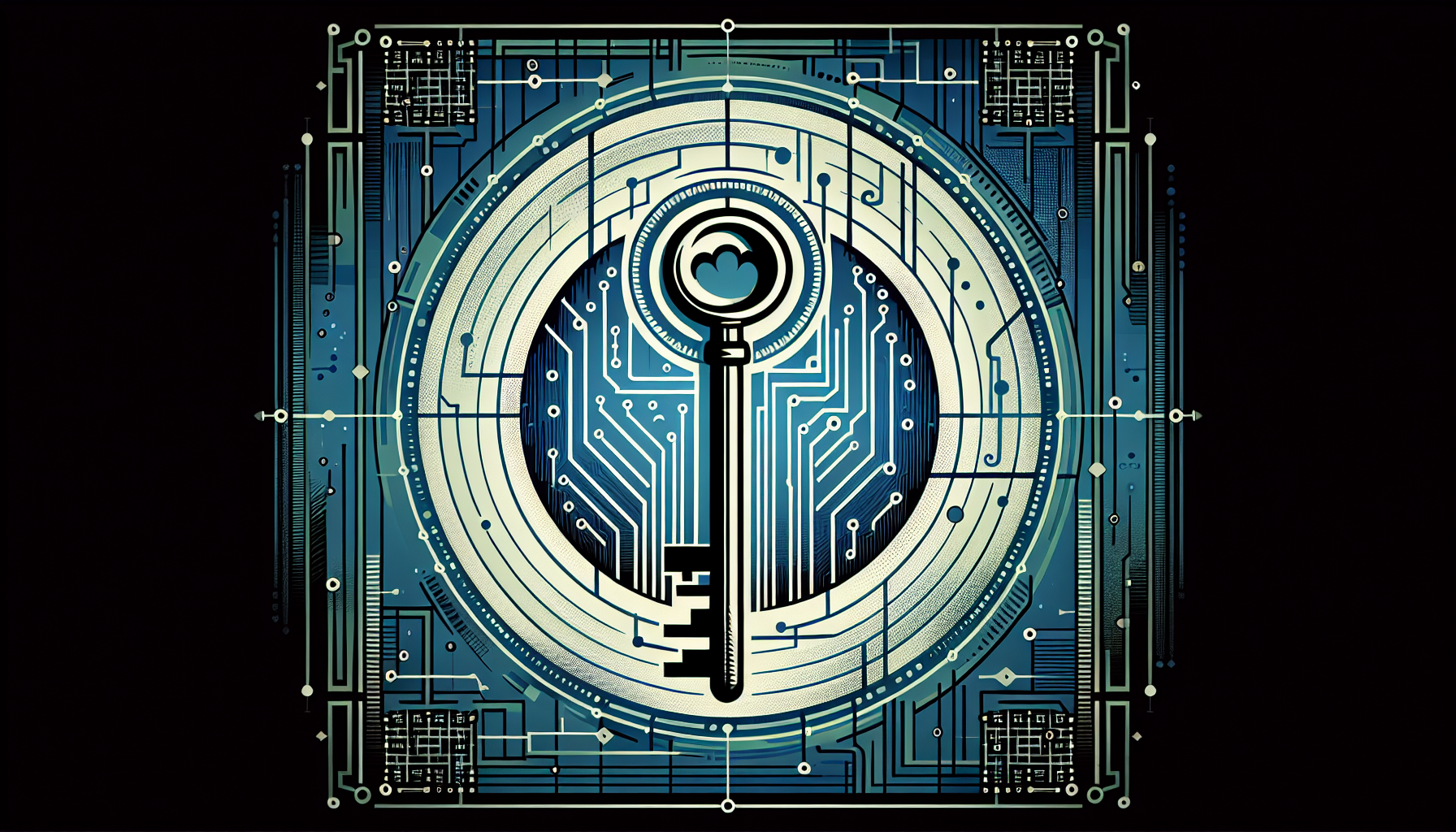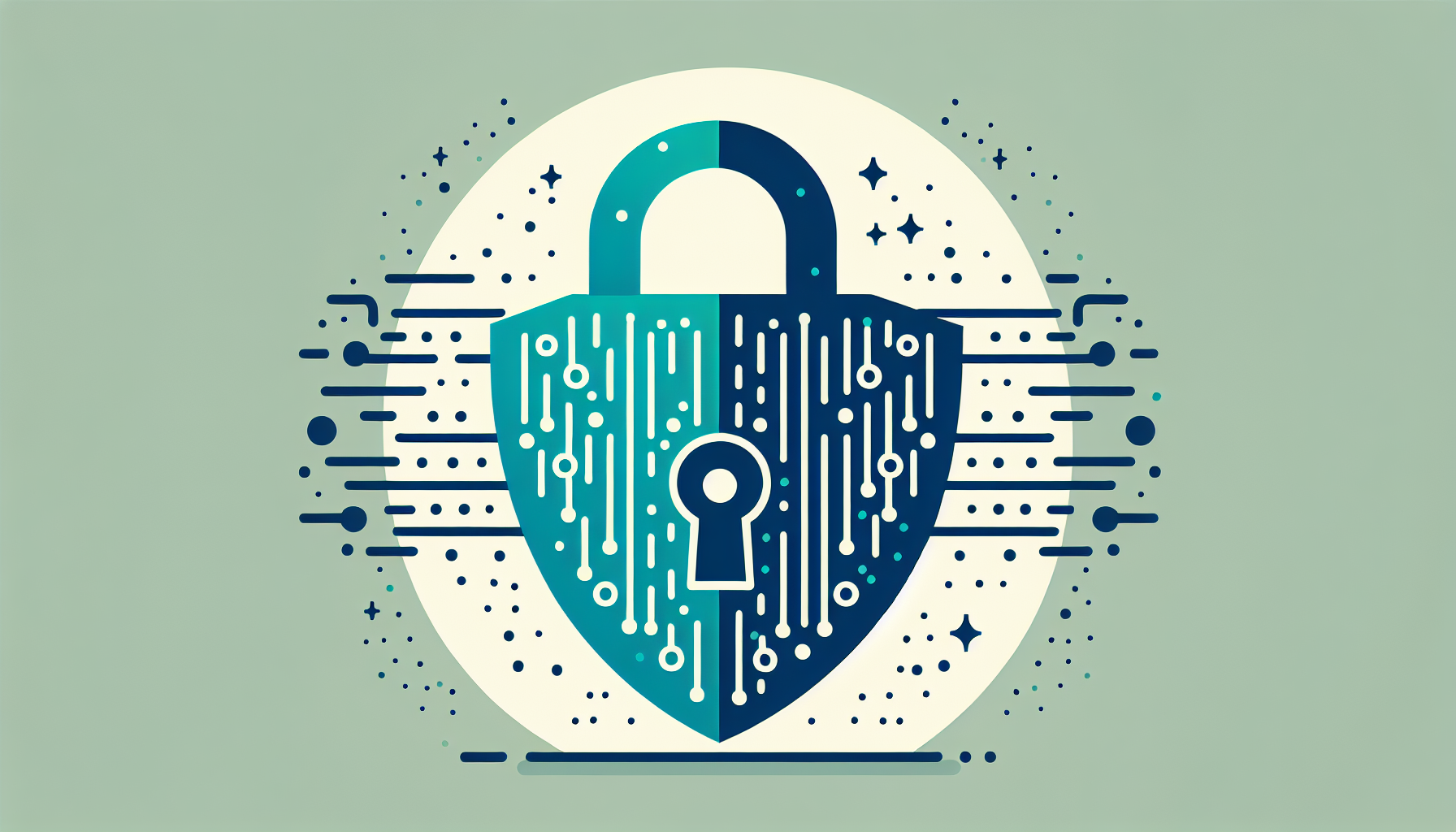Are you feeling overwhelmed by the complexity of encryption strategies? You’re not alone! With so many techniques and methods to choose from, it can be tricky to find the right approach for your needs. But don’t worry; I get it—navigating this tech labyrinth can be daunting.
Stick with me, and I promise that by the end of this guide, you’ll have a clearer understanding of effective prompts you can use with ChatGPT to tackle encryption like a pro. Imagine being able to ask the right questions and getting tailored strategies that fit your specific goals!
We’ll explore everything from basic techniques to advanced methods, plus tips for generating strong encryption keys and designing custom strategies. So, let’s dive in and demystify encryption together!
Key Takeaways
- Understanding encryption strategies can be simplified with the right prompts for ChatGPT.
- Use effective prompts to learn about symmetric vs. asymmetric encryption and their applications.
- Advanced methods like end-to-end encryption and quantum encryption provide enhanced security.
- Generating strong encryption keys involves considering key length and using reliable random number generators.
- Common algorithms like AES and RSA play vital roles in data protection and secure communications.
- Design custom strategies based on specific data protection needs and regularly review encryption protocols.
- ChatGPT can assist in real-world scenarios, helping to secure communications and customer data.

Effective ChatGPT Prompts for Encryption Strategies
Using ChatGPT for encryption strategies involves crafting specific prompts that guide the AI in providing relevant information and assistance.
Here are some effective prompts you can use:
- “Explain the differences between symmetric and asymmetric encryption.”
- “List practical applications of strong encryption in everyday life.”
- “Suggest best practices for implementing encryption in a small business setting.”
- “How can I use ChatGPT to design a custom encryption approach?”
- “What are the latest trends in encryption technology?”
These prompts help you tap into ChatGPT’s strengths in providing detailed and accurate encryption strategies.
Basic Encryption Techniques You Can Ask ChatGPT About
Basic encryption techniques often encompass two main types: symmetric and asymmetric encryption.
Symmetric encryption uses a single key for both encryption and decryption.
Examples include the Advanced Encryption Standard (AES) and DES (Data Encryption Standard).
On the other hand, asymmetric encryption employs a pair of keys—a public key for encryption and a private key for decryption.
This technique underlies systems like RSA.
You can ask ChatGPT:
- “What are the most common basic encryption techniques?”
- “How does symmetric encryption work?”
- “Give examples of when to use asymmetric encryption.”
These questions will give you foundational knowledge to build on.
Advanced Encryption Methods for Better Security
Advanced encryption methods offer enhanced security against today’s sophisticated threats.
One such method is end-to-end encryption, which ensures that data is encrypted on the sender’s device and only decrypted on the recipient’s device.
Public key infrastructure (PKI) is fundamental for managing digital certificates and asymmetric encryption keys.
Quantum encryption is emerging as a powerful tool due to its ability to leverage the principles of quantum mechanics for secure data transmission.
Prompts like these can enhance your understanding:
- “Explain how end-to-end encryption keeps data secure.”
- “What is quantum key distribution and how does it work?”
- “Discuss the role of PKI in modern encryption.”
These inquiries can guide you to grasp more complex encryption concepts.
How to Generate Strong Encryption Keys with ChatGPT
Generating strong encryption keys is crucial for effective encryption strategies.
It’s essential to use a sufficiently long key length; 256 bits is often recommended for AES encryption.
Here’s how you can generate strong keys with ChatGPT:
- Request ChatGPT to list reliable random number generators.
- Ask for guidance on key length requirements for different encryption algorithms.
- Use the AI to create a strong password or passphrase that can be used as a key.
For example, you could use these prompts:
- “Generate a 256-bit encryption key.”
- “What factors should I consider when generating encryption keys?”
- “List the best practices for key management.”
Using these steps and prompts will ensure that your keys are both strong and effective.

Common Encryption Algorithms and Their Uses
Understanding common encryption algorithms is crucial for implementing effective security measures.
Two of the most recognized algorithms are AES (Advanced Encryption Standard) and RSA (Rivest–Shamir–Adleman).
AES is widely used for encrypting data at rest and in transit due to its efficiency and strong security.
RSA is primarily employed for securely transmitting information, especially in establishing secure channels through SSL/TLS.
Other notable algorithms include Blowfish, a fast block cipher that’s often utilized in software applications, and the Triple DES, which enhances the original DES with multiple layers of encryption.
You can ask ChatGPT these prompts to get deeper insights:
- “Explain the differences between AES and RSA and their typical use cases.”
- “List the pros and cons of using Blowfish versus AES.”
- “What encryption algorithms should I consider for healthcare data security?”
These prompts can guide you through selecting the right encryption method for your needs.
Tips for Designing Custom Encryption Strategies
Designing a custom encryption strategy involves assessing your specific security needs.
Start by identifying the type of data that needs protection, such as personal information or sensitive corporate data.
Next, determine the threat model—what types of attacks you are most likely to face.
Your encryption strategy should also include regular reviews and updates to keep pace with evolving threats.
You can create strong custom strategies by utilizing encryption libraries and ensuring key management best practices.
Here are some prompts you can use:
- “Help me create a custom encryption strategy for protecting personal data.”
- “What factors should I evaluate when designing an encryption method?”
- “Provide guidelines for regularly updating my encryption protocols.”
Using these insights, you’ll be better equipped to tailor your encryption approach effectively.
Using ChatGPT for Real-world Encryption Scenarios
ChatGPT can assist in addressing various real-world encryption scenarios, from personal use to enterprise solutions.
For individuals, you might want to secure communications via end-to-end encrypted messaging apps.
For businesses, encryption is essential for safeguarding sensitive customer information and ensuring compliance with regulations like GDPR.
ChatGPT can provide tailored advice for implementing these security measures based on specific situations.
Consider using these prompts:
- “What are the best practices for encrypting customer data in an online store?”
- “Describe how to securely encrypt email communications within my team.”
- “Help me devise a plan for encrypting sensitive documents in cloud storage.”
These commands can help simulate real-world scenarios to better prepare for encryption challenges.

Q&A: Frequently Asked Questions About Encryption
Encryption can be confusing, so let’s tackle some common questions that people ask about it.
One frequently asked question is, “What is encryption and why is it important?”
Encryption is the process of converting information into a code to prevent unauthorized access.
It’s vital for protecting sensitive data, whether it’s personal information, financial details, or corporate secrets.
Another question is, “Can encryption be broken?”
While many encryption methods are incredibly secure, they can be vulnerable to attacks if not implemented correctly.
It’s important to stay updated on the latest vulnerabilities and best practices.
Here are some prompts to ask ChatGPT:
- “What are the biggest misconceptions about encryption?”
- “How does encryption impact my data privacy?”
- “Can you explain how different sectors use encryption?”
Use these questions to clarify your understanding of encryption and its role in security.
Resources for Further Learning About Encryption
If you’re looking to deepen your knowledge of encryption, there are plenty of resources available.
Books like “Cryptography and Network Security” by William Stallings are great for foundational concepts.
Online courses on platforms like Coursera and edX offer comprehensive insights into cryptographic techniques.
Don’t forget about blogs and forums that focus on cybersecurity, as they are excellent for keeping current with trends.
Here are some useful prompts to consider:
- “Recommend some books for learning about encryption and cryptography.”
- “What online courses can help me learn about encryption?”
- “Suggest some trusted blogs or websites for encryption news and updates.”
These resources will help keep you informed and empowered to implement effective encryption strategies.
FAQs
Some basic encryption techniques include symmetric encryption, where the same key is used for encryption and decryption, and asymmetric encryption, which uses a pair of keys (public and private) for secure data transmission.
You can ask ChatGPT for guidelines on using random number generators, appropriate key lengths, and recommended algorithms, ensuring your encryption keys are complex and hard to guess for enhanced security.
Common encryption algorithms include AES (Advanced Encryption Standard) for secure data encryption, RSA for secure key exchange, and DES (Data Encryption Standard) for legacy applications, each suited for specific security needs.
For designing custom strategies, focus on understanding your data sensitivity, employ multiple layers of encryption, regularly update algorithms, and incorporate user authentication methods to enhance overall security.
